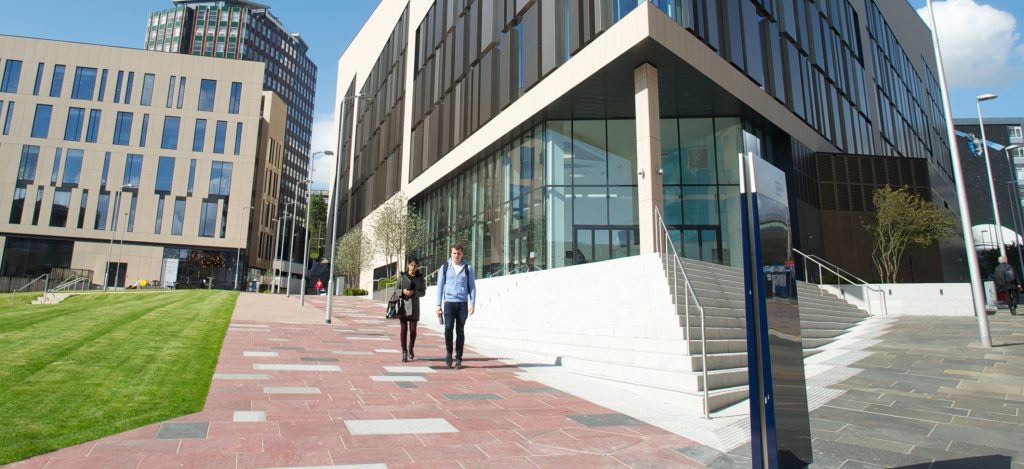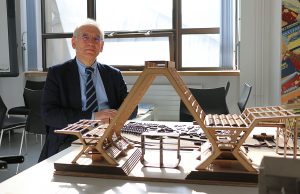Introduction The Futuristic Interactive Technologies research group of Turku University of Applied Sciences (TUAS) focuses in its RDI operations on…
Tekijät | Authors

Turning to Scotland for reinforcement for engineering education, Part One
Turku is seeking a remedy from Glasgow for shortage of masters of engineering in Southwest Finland. The collaboration between Turku University of Applied Sciences (TUAS) and the University of Strathclyde is an example of how new educational paths can develop quickly, if the will is strong.
Marine and technology industries are thriving again, which has led to an urgent shortage of masters of science in technology in Southwest Finland. What should we do in a city where extensive university education in the field of technology does not exist for education policy-related reasons and, because of this, the R&D activity in the field is not strong enough?
This issue has been considered by TUAS Vice Rector Juhani Soini and the Head of Business and Competence Development of the City of Turku, Esa Tuomisto. The representatives of Southwest Finland industry advised them to look to Glasgow for ideas.
They did, and they found the University of Strathclyde, with Scotland’s largest faculty of engineering and over 5,000 students in a range of engineering fields. Strathclyde’s connections to regional industry are strong. They also cooperate with companies that are TUAS’ working life partners, as well, such as Rolls-Royce.
In addition to the Master’s Degree Programme in Marine Engineering, a joint Master’s programme in mechanical engineering is under planning.
During their short visit to Glasgow last November, Tuomisto and Soini presented the positive structural change taking place in the economy of Southwest Finland and the shortage of engineers. Strathclyde became instantly interested. During the spring, people from Glasgow visited Turku and vice-versa and common openings have been quickly identified. For instance, joint Master’s degree programmes in Marine Engineering and Mechanical Engineering between the two universities are under development.
According to Soini, the underlying idea is to support technical master-level education in Turku. After four years of engineering studies at TUAS, students could acquire a Master’s degree in one year by participating in the Master’s degree programme offered jointly by TUAS and Strathclyde. The degree will be awarded by the University of Strathclyde.
“Since Turku doesn’t have a multidisciplinary technical university, this way our engineers will have a direct route to master-level education”, Soini says.
Interested in the marine cluster
Why, then, is Glasgow interested in Turku and Southwest Finland? The story of collaboration begins from the marine industry.
The traditional shipbuilding industry of Glasgow, which has undergone several transitions, has concentrated on building state-of-the-art naval ships and car ferries as well as on offshore industry. The Meyer shipyard in Turku focuses on building luxury cruise ships and the network comprising a range of different businesses that has evolved around the shipyard is something you can’t find in Scotland.
Professor Atilla Incecik, Associate Principal and Executive Dean of the Faculty of Engineering at the University of Strathclyde, views the cooperation as beneficial for both parties. The engineering education in Turku will become stronger and, at the same time, Strathclyde students who are interested in marine industry will be offered new opportunities in terms of theses and work.

Professor Atilla Incecik, Associate Principal and Executive Dean of the Faculty of Engineering at the University of Strathclyde, believes that clearly defined objectives and mutual benefit will make collaboration with TUAS successful. In the photo, Incecik is visiting the End of Year Exhibition of the Faculty’s Architecture students. The exhibition includes a ship yard designed by a student.
Reaching out to the world is familiar to Strathclyde. The university cooperates with other universities around the world and hosts engineering students from 100 countries. Incecik believes that a multicultural study environment prepares students for international working life that doesn’t follow national borders.
“Today both technology and business life are global”, he says.
The place of useful learning. Visitors to the university encounter Strathclyde’s catchphrase several times. Close connections with industries are fostered in order for the university to keep up with the development of business life and working life requirements. The representatives of Strathclyde perceive the same spirit at TUAS.
Dr Julia Race, the Head of Department of Naval Architecture, Ocean and Marine Engineering of the University of Strathclyde, participated in the Turku visit and was impressed by how clearly and uniformly the representatives of TUAS, the City of Turku and local industries articulated the educational needs and shortage of professionals within the region.
“We are all engineers, and when we understand the problem, we want to start solving it quickly”, Race says.
Not either-or, it is both-and
Juhani Soini from TUAS and Esa Tuomisto from the City of Turku emphasize that the cooperation with Strathclyde is one means among others to remedy the shortage of masters of science in technology in Southwest Finland but it does not solve the problem alone.
The Federation of Finnish Technology Industries has estimated that the needs of Southwest Finland technology businesses for recruiting professionals with higher education will double over the next few years from 450 to 800 each year. At the same time, 200 people from Southwest Finland apply for university studies in technical fields.
Strathclyde collaboration is intended to have a targeted impact through swift measures.
According to Soini and Tuomisto, the University of Turku needs a comprehensive faculty of engineering. It would not only educate more masters of science in technology but also secure core funding for the technical research and innovation activity within the region.
“Investments in product development in industry have been significantly smaller within this region than in Helsinki area, Tampere and Oulu. Turku is not a full-scale innovation centre since we lack the annual research turnover of over EUR 50 million brought to the area by a technical university”, Soini says.
Tuomisto remarks that the Strathclyde collaboration is intended to have a targeted impact through swift measures. Gaining the extended rights to educate masters of science in technology at the University of Turku, in its turn, is a necessary and permanent reinforcement for the regional competence structure and future competitiveness.
Education and research must be developed by cross-border collaboration.
Tuomisto, Soini and the Strathclyde representatives all agree that education and research must, in any event, be developed by cross-border collaboration in order to prepare students for global working life.
“Research and innovation is an international, highly competitive business. If you wish to stay in the frontline, you have to act internationally”, concludes professor Tim Bedford, Associate Principal Research & Innovation at the University of Strathclyde.
Read Part Two of the collaboration
Get to know University of Strathclyde
Read the article about the beginning of our cooperation
Photo of Atilla Incecik: Heidi Pelander
Photos on the front page and at the beginning of the article: University of Strathclyde








